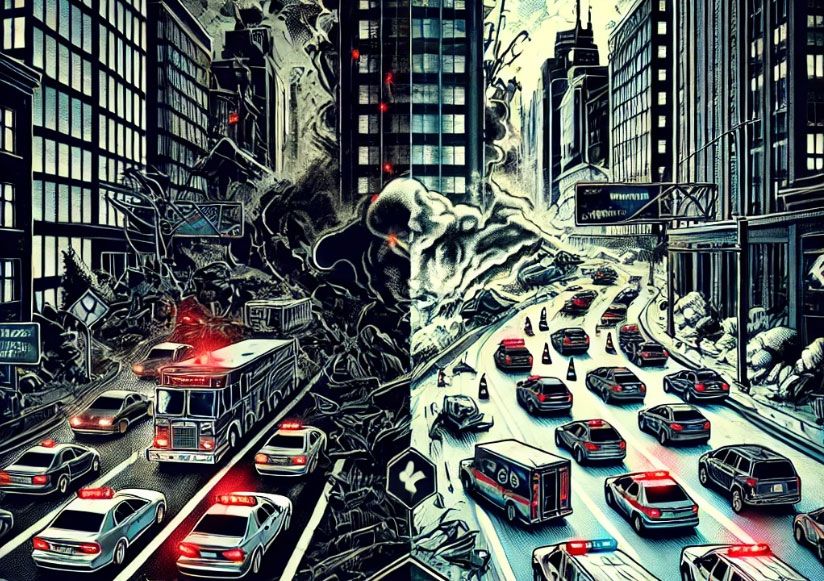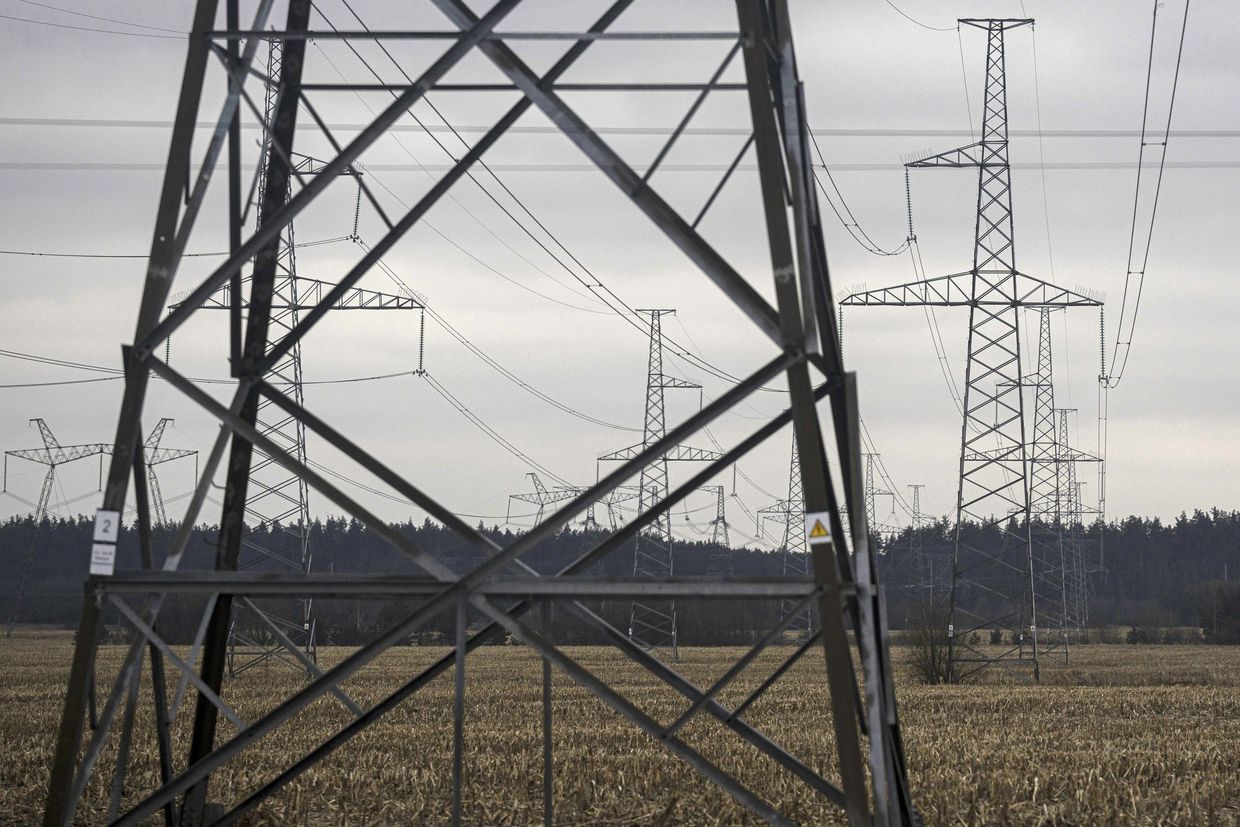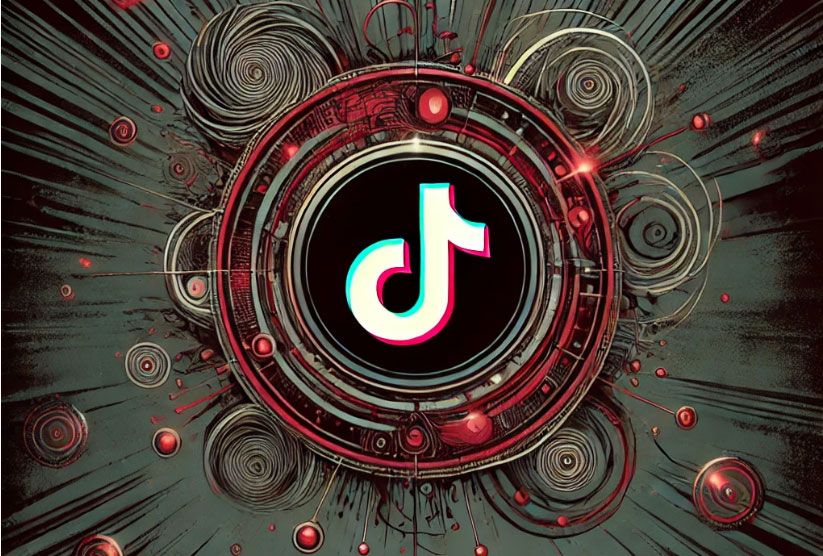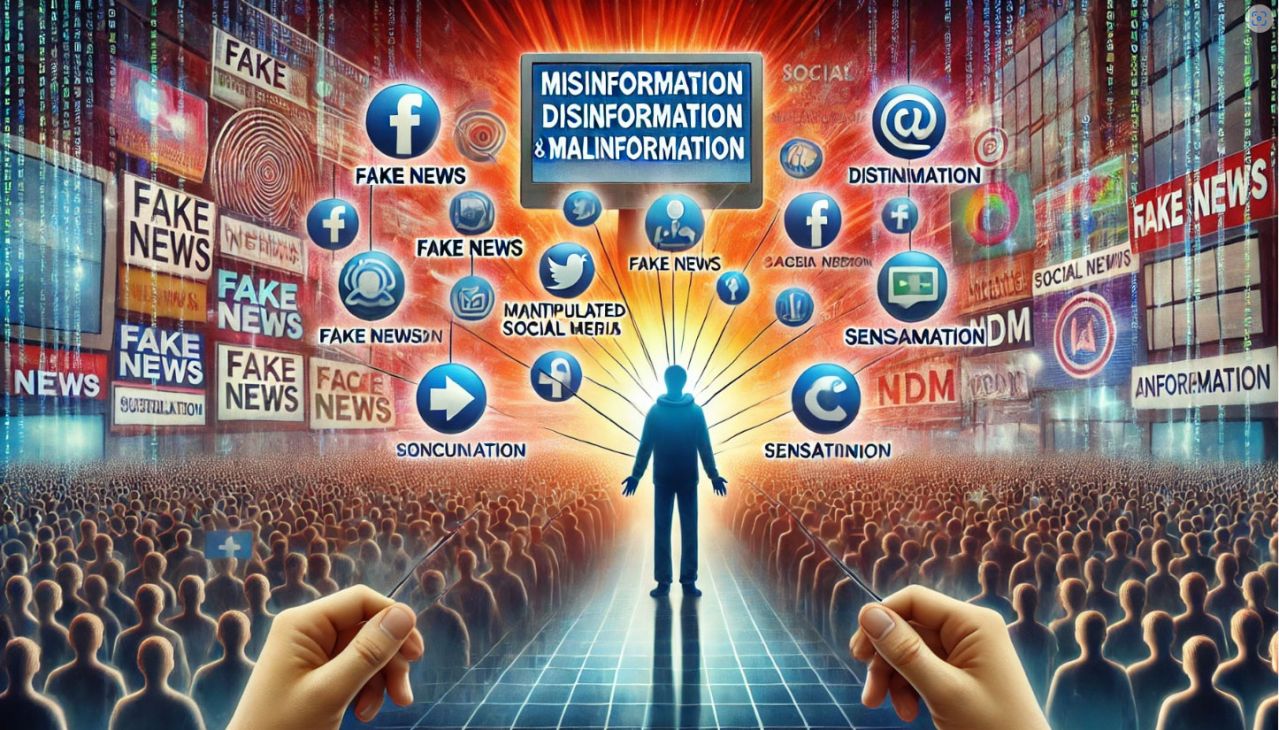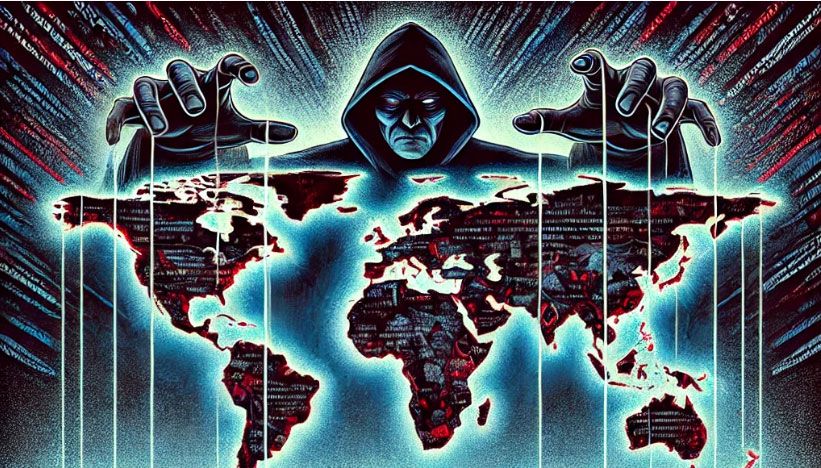Sounds like a dystopian sci-fi scenario, right?
But as researchers have discovered, this kind of attack is not just possible; it's alarmingly easy to execute.
Disinformation has long been used to manipulate public opinion, but what if it were weaponized against critical infrastructure like electricity, road networks, and cybersecurity?
The Invisible War We’re All Part Of
This article explores a groundbreaking study, Weaponizing Disinformation Against Critical Infrastructures, by Lorenzo Alvisi, John Bianchi, Sara Tibidò, and Maria Vittoria Zucca.
Their research unveils how disinformation can be leveraged to cripple vital services, disrupt economies, and even endanger lives.
We break down the findings into three real-world scenarios and explain how these threats could affect you directly.
What is Disinformation, and Why is it So Dangerous?
Disinformation is deliberately false or misleading information spread with the intent to deceive and cause harm.
Unlike simple misinformation (which is false but not necessarily malicious), disinformation is a strategic weapon.
Historically, it has been used in political propaganda, wartime deception, and economic sabotage.
However, the researchers argue that its most dangerous application might be its ability to target critical infrastructure — the essential services that keep society running, such as power grids, transportation, and cybersecurity systems.
By exploiting public trust and behavioral patterns, disinformation campaigns can manipulate people into unknowingly aiding in their own destruction.
Three Ways Disinformation Can Wreck Your Life (Without You Knowing)
Disinformation Can Take Down the Power Grid
How It Works:
The study highlights a shocking possibility: disinformation can be used to cause mass blackouts.
Imagine a fake message spreading on social media claiming that electricity rates will be 50% cheaper between 8 PM and 10 PM due to government subsidies.
Thousands of people turn on their appliances, charge their electric cars, and crank up their ACs.
The result? A massive surge in demand that overloads the power grid, causing rolling blackouts or even a total collapse.
Researchers conducted a survey experiment to test whether people would change their electricity consumption based on disinformation.
The results were alarming: a significant percentage of respondents stated that they would alter their behavior based on false incentives, demonstrating how easily a well-placed fake message could destabilize an energy system.
Why This Matters:
Power grids are highly sensitive to sudden changes in energy consumption.
A widespread blackout affects:
- Hospitals: Life-support machines fail, surgeries are interrupted, and patients are put at risk.
- Transportation: Traffic lights stop working, public transit shuts down, and airports halt operations.
- Economy: Businesses lose millions, factories shut down, and stock markets panic.
- Public Safety: Past blackouts, such as the Netherlands' 2015 outage, showed how crime rates and emergency incidents surged when cities went dark.
- Criminal Exploitation: Organized crime groups have been known to exploit power failures to carry out thefts and cyberattacks under the cover of darkness.
Real-World Example:
The research cites a simulation conducted in Los Angeles, where a two-week total blackout would cost the economy $20.5 billion. Even a few hours of disruption can cause chaos, as seen in the New York City blackout of 1977, which led to widespread looting, arson, and mass panic.
Traffic Chaos Through Fake GPS Data
How It Works:
A second case study in the research shows how fake traffic reports can be used to create artificial congestion in major cities.
Attackers could flood Google Maps, Waze, and Apple Maps with false traffic data, convincing the apps to reroute thousands of drivers into the same streets.
The result? A manufactured traffic jam that clogs entire sections of a city.
The study demonstrates that at least 15% of drivers follow GPS app instructions blindly, meaning a relatively small number of manipulated routes could gridlock an entire city.
In emergency situations, this could be used to divert law enforcement away from actual crime scenes, allowing for simultaneous physical attacks elsewhere.
Why This Matters:
- Emergency Response: Ambulances, fire trucks, and police vehicles struggle to reach those in need.
- Economic Damage: Deliveries are delayed, businesses suffer, and daily commutes become nightmares.
- Panic & Distrust: People lose confidence in navigation apps, leading to chaotic, unpredictable traffic behavior.
- Potential for Cyber Warfare: This type of disinformation attack has been identified as a potential nation-state tactic to cripple urban centers during conflict.
Real-World Example:
In 2020, Berlin-based artist Simon Weckert used 99 smartphones in a cart to create a fake traffic jam in Google Maps.
The app detected the slow-moving phones as heavy congestion, causing other drivers to reroute unnecessarily.
While this was a harmless experiment, the implications for intentional, large-scale sabotage are clear.
Cyber Sabotage: The XZ Utils Backdoor Incident
How It Works:
One of the most chilling case studies in the research details a real cyberattack that went unnoticed for months.
Attackers infiltrated an open-source software project called XZ Utils, which is used in millions of Linux-based systems.
By posing as legitimate developers, they inserted a backdoor into the code, giving them full control over any system using it.
The XZ backdoor attack highlights a weakness in open-source security: many widely used software packages are maintained by volunteers with limited oversight, making them prime targets for infiltration.
In this case, a fake contributor infiltrated the project over two years before inserting the malicious code.
The attack was specifically designed to evade detection, leveraging subtle changes in CPU usage to operate undetected.
If security researchers had not noticed this anomaly, the backdoor could have compromised government systems, financial institutions, and critical infrastructure worldwide.
Real-World Example:
This actually happened in 2024. The backdoor was only discovered by accident when a developer noticed that his computer’s CPU was behaving strangely.
If left undetected, this could have been one of the most devastating cyberattacks in history, potentially giving attackers access to government, financial, and military systems worldwide.
The Real Cost of Disinformation
Disinformation is no longer just about fake news on social media.
It has evolved into a sophisticated weapon capable of disrupting our most vital systems.
If left unchecked, it could cause mass blackouts, citywide traffic jams, and catastrophic cyberattacks.
Awareness is the first step toward defense.
Next time you see a suspicious message or an unusual traffic report, remember: what you believe and share could be part of a much larger attack.
Social media companies play a crucial role in amplifying disinformation.
Without strong regulation, they will continue to act as unchecked catalysts for the spread of false narratives that endanger civil societies.
It is imperative that governments and organizations hold these platforms accountable, ensuring that they implement stricter content moderation policies, transparency measures, and stronger cybersecurity defenses.
Sources & Further Reading
- Weaponizing Disinformation Against Critical Infrastructures by Lorenzo Alvisi, John Bianchi, Sara Tibidò, and Maria Vittoria Zucca - Full Paper
- RAND Corporation: Economic impact of power grid failures - Read More
- The New York Times: The 1977 NYC Blackout - Read More
- The Verge: How Google Maps was tricked by 99 smartphones - Read More
- Wired: The XZ Utils Backdoor Incident - Read More
By staying informed, we can defend against digital threats before they turn into real-world disasters.
Did you learned something new today? Do you enjoy my work?
Keep it going for just $2! 🎉
Grab a membership, buy me a coffee, or support via PayPal or GoFundMe. Every bit helps! 🙌🔥
BMAC:https://buymeacoffee.com/nafoforum/membership
PP: https://www.paypal.com/donate/?hosted_button_id=STDDZAF88ZRNL
GoFundMe: https://www.gofundme.com/f/support-disinformation-education-public-education-forum
Study overview
Summary of the study Weaponizing Disinformation Against Critical Infrastructures by Lorenzo Alvisi, John Bianchi, Sara Tibidò, and Maria Vittoria Zucca.
1. Introduction: The Expanding Role of Disinformation
Disinformation has traditionally been studied in the context of political manipulation, election interference, and public health misinformation (e.g., COVID-19). However, this study highlights a critical yet underexplored aspect: how disinformation can be used to disrupt essential infrastructure systems, leading to real-world consequences like power outages, transportation failures, and cyberattacks.
The researchers argue that hybrid threats—a mix of digital deception and physical disruption—are emerging as a new form of attack on modern societies. Disinformation is no longer just about influencing opinions; it is being used as a weapon to destabilize entire economies and governments.
Key Research Question:
👉 How can disinformation be weaponized to target critical infrastructures like power grids, road networks, and software supply chains?
2. Literature Review: Disinformation Beyond Social Manipulation
Most prior research has focused on disinformation’s role in:
- Social media manipulation (e.g., fake news, propaganda)
- Election interference (e.g., Russia’s influence on U.S. elections)
- Public health misinformation (e.g., COVID-19 conspiracies)
However, less attention has been given to how disinformation can directly impact physical and digital infrastructure. While studies exist on cyberattacks and supply chain vulnerabilities, few have explored the intersection between fake information and real-world infrastructure failures. This study fills that gap by examining three specific cases where disinformation can cause large-scale disruptions.
3. Case Studies: Three Ways Disinformation Can Wreak Havoc
3.1. Power Grid Manipulation Through Disinformation
Scenario:
The researchers explore how false information about energy pricing or grid reliability can lead to blackouts and grid failures.
Methodology & Experiment:
- They conducted a survey-based experiment testing whether people would change their electricity consumption based on fake price incentives.
- Results showed that a significant number of people were willing to adjust their energy usage in response to disinformation.
- This proves that a coordinated disinformation campaign could induce demand surges, overloading the grid and causing cascading failures.
Potential Consequences:
- Health Risks: Blackouts disrupt hospitals, emergency services, and food storage.
- Economic Damage: Power outages cost up to $20 billion+ in damages.
- Security Risks: Criminals could exploit blackouts for looting and cyberattacks.
Historical Precedents:
- New York City Blackout (1977): Caused $155M in damages, led to mass looting.
- Netherlands Blackout (2015): Emergency services overwhelmed due to misinformation.
3.2. Traffic Gridlock Through Fake GPS Data
Scenario:
A well-coordinated fake traffic campaign could cripple urban road networks by manipulating GPS navigation systems (e.g., Google Maps, Waze).
Methodology & Experiment:
- Researchers analyzed how navigation apps reroute drivers in response to traffic congestion.
- They found that if only 15% of drivers followed manipulated traffic data, an entire city’s road network could be gridlocked.
How Disinformation Can Be Used:
- Fake reports of road closures, construction, or accidents force apps to reroute traffic into congested bottlenecks.
- Attackers create artificial traffic jams using bot-generated congestion signals.
- Law enforcement resources get misallocated, delaying emergency responses.
Potential Consequences:
- Emergency Delays: Ambulances and fire trucks struggle to reach destinations.
- Economic Losses: Delivery delays, commuter disruptions, and lost revenue.
- Panic & Mistrust: People lose confidence in navigation systems, leading to chaotic driving behavior.
Historical Precedents:
- Berlin Experiment (2020): Simon Weckert manipulated Google Maps by using 99 smartphones in a cart to simulate a traffic jam.
- Cyberwarfare Tactics: State actors could cripple a city’s road network during geopolitical conflicts.
3.3. Cyber Sabotage: The XZ Utils Backdoor Incident
Scenario:
The study examines how disinformation combined with cyberattacks can infiltrate software supply chains, leading to catastrophic security breaches.
Methodology & Attack Vector:
- Attackers infiltrated an open-source software project (XZ Utils), inserting a hidden backdoor into widely used Linux-based systems.
- The fake contributor (“Jia Tan”) built trust over two years, then inserted malicious code into an update.
- If not detected, this would have allowed hackers full system control over millions of devices.
Potential Consequences:
- Global Cybersecurity Threat: Attackers could execute any command as a superuser, potentially shutting down government, military, and financial systems.
- National Security Risk: The U.S. and EU classify software supply chain infiltration as a top-tier cyber threat.
- Digital Trust Erosion: If open-source software is no longer trusted, it could cripple global tech infrastructure.
Historical Precedents:
- SolarWinds Hack (2020): Russian operatives infiltrated U.S. government networks through a compromised software update.
- Log4j Vulnerability (2021): A zero-day exploit in a widely used logging framework affected millions of systems worldwide.
4. Key Takeaways: Why This Study Matters
1. Disinformation is Evolving Beyond Social Influence
- It is now a tool for hybrid warfare targeting essential services, infrastructure, and digital ecosystems.
2. Critical Infrastructures Are Vulnerable to Fake Information
- People trust energy providers, GPS apps, and software updates, making them easy targets for disinformation.
3. Cybersecurity and Public Awareness Must Evolve
- Governments and organizations must detect and counter disinformation before it causes real-world harm.
- Stronger AI-driven monitoring systems are needed to detect traffic manipulation and software vulnerabilities.
5. Conclusion: Disinformation as a Weapon of the Future
The study highlights that disinformation is no longer just about politics—it is now a tangible threat to society’s most essential systems. With the rise of AI-generated fake news, deepfakes, and automated botnets, the risks are only increasing.
The key takeaway? Disinformation is now a critical cybersecurity threat that requires urgent attention from governments, corporations, and the general public.


